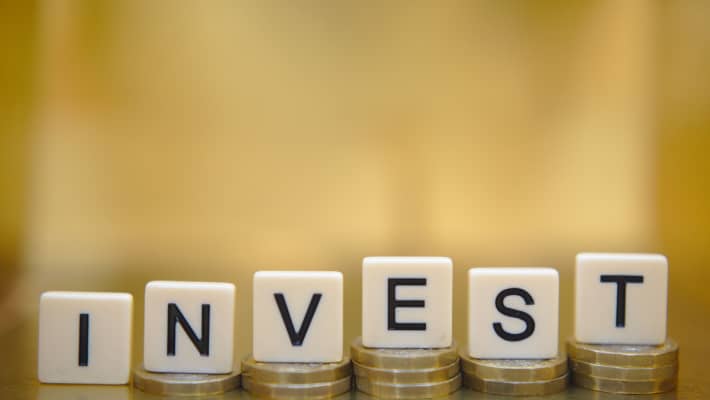Thursday Nov 23 2023 07:59

12 min

Investing in IPOs can be a thrilling yet complex journey, and understanding the players involved is essential.
There are various types of IPO investors, each with its own approach and influence on the market.
I will break down these investor types for you, helping you make informed decisions in the IPO landscape.
When it comes to expanding one's investment portfolio, Initial public offerings (IPOs) often stand out as an attractive option. But why is that?
Let's look at the benefits:
Investing in an IPO allows you to start at the foundation level of a company that could show significant growth.
If you place your bet on, say, a fledgling company promoting a disruptive technology and it succeeds in capturing the market's attention, your investment could multiply as the company thrives.
Imagine reaping the rewards from the success of a company you believed in from the start.
Investments in IPOs fall under equity investments. They possess the potential for substantial returns over time, making them ideal for meeting major financial goals, be it planning for retirement or purchasing a home.
To put it in perspective, the Indian IPO market saw tremendous growth in 2017, with the stock market raising close to $11 billion through IPOs alone.
One of the strengths of IPOs is the clarity in pricing. Each security's price is detailed in the IPO order document, levelling the playing field between you and bigger investors.
After the IPO, share prices are influenced by fluctuating market rates and what stockbrokers can offer, but at the IPO stage, everything is transparent.
Often, the IPO price tag is the most affordable one will find, especially if it's a smaller company with vast potential. Companies might offer securities at a discounted rate during the IPO. Waiting too long might mean missing out, especially if the stock's price shoots up.
For some inspiration, consider Amazon. When it launched its IPO in 1997, shares were priced at $18 each. A $5,000 investment back then would have been valued at a staggering $2.5 million by April 2018.
One of the golden rules of investing is diversification – not putting all your eggs in one basket. By adding IPOs to your investment mix, you're essentially broadening your portfolio's horizon. Different sectors and industries go public every year, giving investors a chance to invest in diverse fields, and reducing the overall risk.
Post-listing, a company's shares can be easily bought or sold on the stock exchange, offering high liquidity to the investors. This means if you need to convert your shares into cash, you can do so more easily, especially with companies that generate significant interest.
Getting a first look at a company's operations, financials, and strategies is another advantage of IPO investments. The mandatory disclosures that companies make during the IPO process can give investors a deeper understanding of the company, helping them make more informed decisions.
Companies going public are subjected to stringent checks and audits by regulatory bodies. This ensures that the information they provide is accurate and that they comply with the necessary financial and operational standards.
If an IPO is oversubscribed (demand for shares exceeds the number available), it's a sign of high interest and trust in the company from the market. Investors in such IPOs may receive additional shares, which can further increase the potential for profits.
On a broader level, investing in IPOs contributes to economic growth. When you invest in a company's IPO, you're providing them with capital that can be used for expansion, research, or paying off debt. It can lead to job creation, innovations, and more, benefiting the larger community and economy.

Each type of investor brings a unique set of characteristics, motivations, and influences, and their involvement can profoundly shape the trajectory and outcome of an IPO.
Let’s look into a few examples of investors in IPOs that are often talked about.
Institutional investors or Qualified Institutional Investors (QIIs) are entities or organizations that pool together funds to invest them in securities, real properties, and other investment assets.
These can include banks, insurance companies, pension funds, hedge funds, REITs, investment advisors, endowments, and mutual funds.
Characteristics:
Given their substantial purchasing power, institutional investors can significantly influence the success or failure of an IPO. Their involvement often boosts the confidence of other potential investors.
Non-Institutional Investors (NIIs) are individuals or entities that are not classified under retail individual investors or qualified institutional buyers. They generally invest a larger amount than retail investors but do not have the scale of institutional investors.
Characteristics:
Their participation can act as a bridge between retail and institutional investors. They might bring additional liquidity and depth to the market.

Retail Individual Investors (RIIs) are everyday individuals who invest their capital into stocks, bonds, and other assets, including IPOs. They don't have the financial clout of institutional or non-institutional investors.
Characteristics:
Retail participation in an IPO can be a sign of public confidence in the company. A high RII involvement can also mean more liquidity in the stock once it starts trading, but their participation might also lead to more volatility.
An anchor investor is an institutional investor who commits to purchasing a substantial number of shares in an IPO before the actual listing of the shares. Their early commitment often sets a positive tone for the IPO and helps in price discovery.
Characteristics:
Anchor investors play a pivotal role in boosting the confidence of other potential investors. Their involvement is often viewed as a seal of approval, suggesting that the IPO is a worthy investment.
Insider investors refer to individuals or entities that have a pre-existing relationship with the company going public. This can include the company's executives, employees, board members, or early-stage private investors.
Characteristics:
The participation level and behaviour of insider investors can send strong signals to the market. If insiders are heavily selling, it might be perceived as a lack of confidence in the company's prospects, whereas minimal selling or additional buying can be seen as a bullish sign.
Taking a company public is a monumental decision, marking a transformative phase in its lifecycle.
However, the path to going public is not one-size-fits-all. Companies are faced with two primary routes when they decide to initiate an Initial Public Offering (IPO): the Fixed Price Issue and the Book Building Issue.
Both these mechanisms come with their distinct methodologies, advantages, and considerations.
As we study deeper, we'll understand the nuances of each approach, highlighting how they can shape the IPO's trajectory and the subsequent market reception.
In a fixed price issue, the company determines a specific price for the shares it will offer to potential investors. To determine this price, a company brings on board a merchant banker. This entity evaluates the current and potential value of the company.
They also assess the risks associated with the investment to ensure that investors are adequately compensated for any potential risks they might undertake. After thorough research and evaluation, the merchant banker helps the company decide on the optimal share price.
For investors, the advantage here is clarity; they know the exact price of the share before the company goes public and pay the predetermined price when subscribing to the IPO.
The book-building issue takes a more dynamic approach to pricing. Instead of setting a fixed price, the company establishes a price range with a lower limit, known as the "floor price," and an upper limit called the "cap price."
Potential investors then place their bids within this range over a specified period. These bids indicate the price they're willing to pay for the shares and the number of shares they wish to purchase.
Once the bidding phase concludes, the company reviews all the bids to decide on the final price.
The eventual share price rests on the demand from the investors and the bids they placed within the defined range.
The journey through the various facets of IPO investing has revealed its undeniable appeal. From understanding the reasons behind an investor's inclination towards IPOs to exploring the distinct types of IPO investors, the landscape of initial public offerings is vast and varied.
With numerous IPOs dotting the horizon, it's imperative to grasp the differences between the types and to recognize the unique advantages each presents.
Trade on the most buzzworthy companies going public and harness the potential of the IPO market.
Happy investing!
“When considering initial public offering (IPO) for trading and price predictions, remember that trading CFDs involves a significant degree of risk and could result in capital loss. Past performance is not indicative of any future results. This information is provided for informative purposes only and should not be construed to be investment advice.”